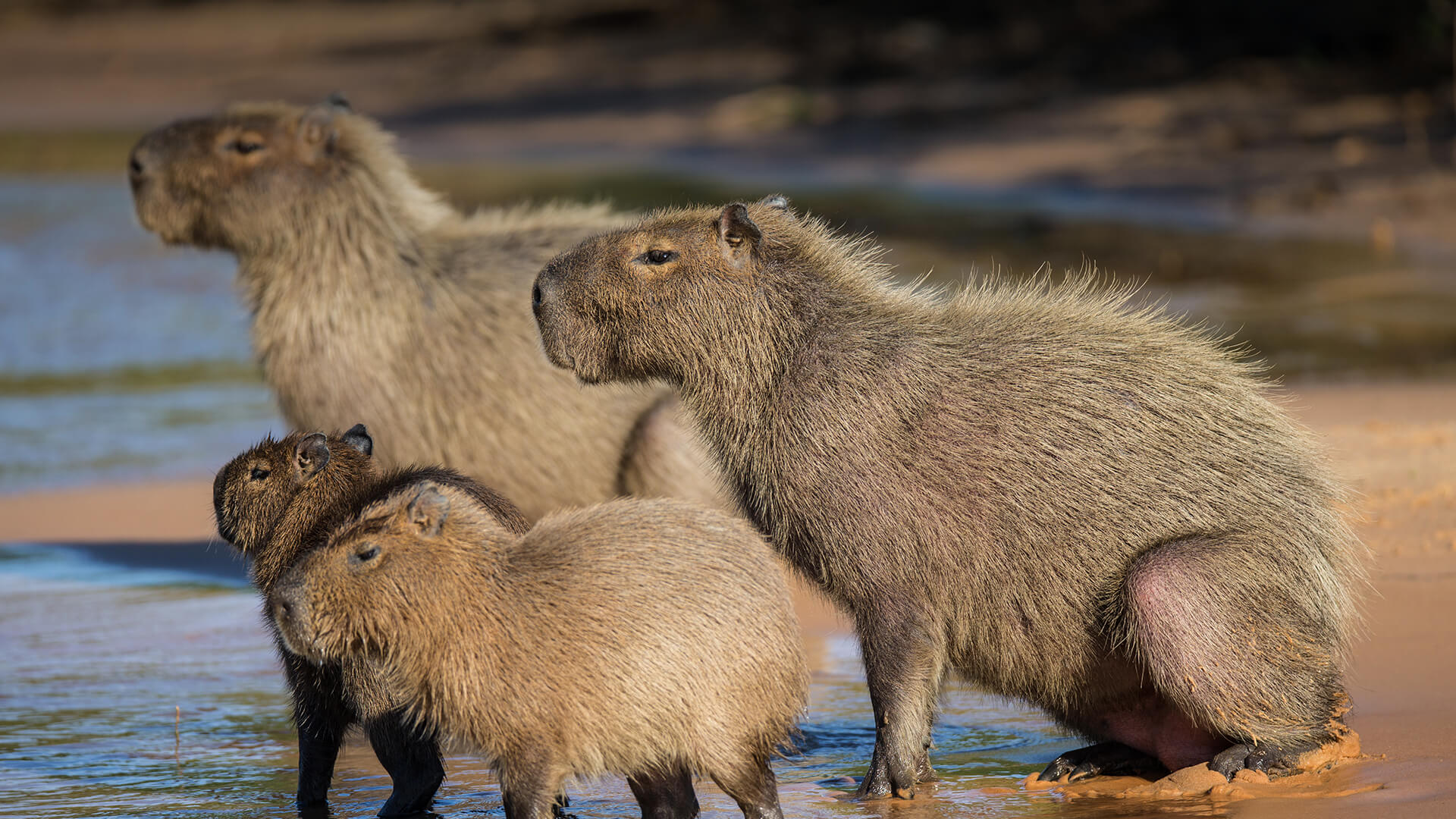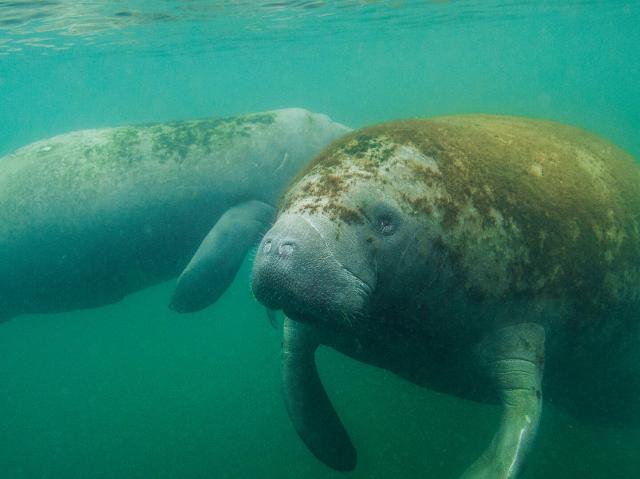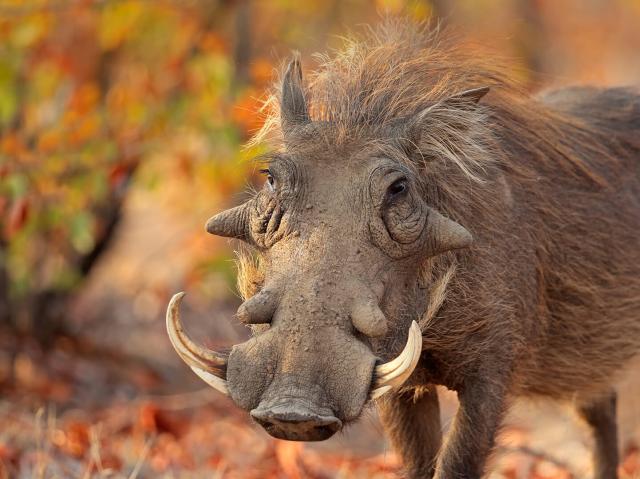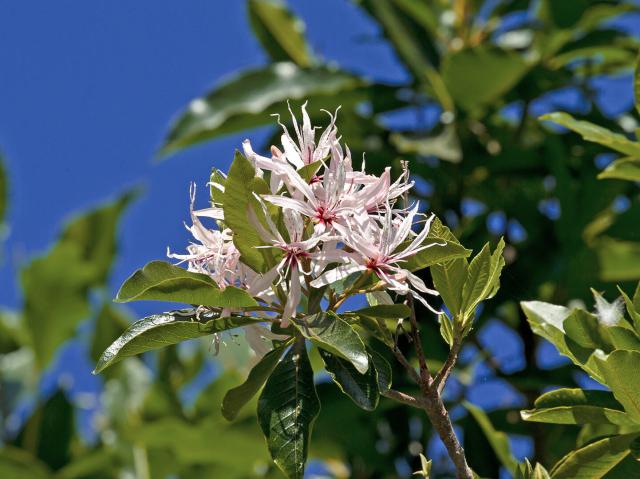
Capybara

- Class: Mammalia (Mammals)
- Order: Rodentia
- Family: Hydrochaeridae
- Genus: Hydrochoeris
- Species: hydrochaeris (capybara)
- Species: isthmius (lesser capybara)

ABOUT
A rodent of unusual size. Is it a beaver without a tail? A hairy pig without a snout? No, it’s a capybara, the largest rodent in the world! Standing 2 feet (60 centimeters) tall at the shoulder and built somewhat like a barrel with legs, the “capy” has long, light brown, shaggy hair, a face that looks like a beaver’s, no tail, and slightly webbed feet. Originally thought to be a pig of some sort, we now know that the capybara is a rodent, closely related to cavies and guinea pigs.
Water pig. Africa has hippos, and the Americas have capybaras! Capys are found east of the Andes on Central and South American riverbanks, beside ponds, and in marshes or wherever standing water is available. Due to its dry skin, a capy requires a swimming hole as part of its lifestyle to stay healthy.
Water is a source of life for the capybara, as they eat water plants and grasses and use the water itself to escape from danger. In fact, a capybara can stay underwater for up to five minutes at a time to hide from predators. It uses those webbed feet (four toes on each front foot and three on each back one) to swim as well as walk.
The capybara has something in common with the hippo: its eyes, ears, and nostrils are all found near the top of the its head. A capybara can lift just those parts out of the water to learn everything it needs to know about its surroundings while the rest of its body remains hidden underwater.
Capybaras also wallow in shallow water and mud to keep cool during a hot day before wandering out in the evening to graze. They tend to eat around dawn and dusk, but if capybaras feel threatened, they wait until the safe cover of night to eat.
HABITAT AND DIET
Feeling right at home. Capybara live in Central and South America. They roam the swampy, grassy regions bordering rivers, ponds, streams. and lakes.
Long in the teeth. Because capybaras are rodents, they share some common features with mice, squirrels, and porcupines. The most well-known of those features are probably those ever-growing front teeth. Capybaras use their long, sharp teeth for grazing on grass and water plants. An adult capy can eat 6 to 8 pounds (2.7 to 3.6 kilograms) of grass per day! During the dry season, when fresh grasses and water plants dry up, capybaras eat reeds, grains, melons, and squashes. They also eat their own poop to get beneficial bacteria to help their stomach break down the thick fiber in their meals.
Even though rodents aren’t closely related to ruminants like goats, cows, and giraffes, capybaras regurgitate their food to chew it some more. They chew their food from side to side, like a camel, rather than up and down, like we do. This is a good way to eat tough plant materials.
At the San Diego Zoo, the capys are offered low-starch, high-fiber biscuits, assorted veggies and greens, and Bermuda grass hay.
FAMILY LIFE
Many helpers. Capybaras usually live in small groups of about 10 individuals, made up of a dominant male, one or more females, one or more subordinate males, and several young. During the wet season, as many as 40 capys may be found together. It is helpful to have many sets of eyes watching out for the youngsters, since they can easily fall victim to caimans, ocelots, harpy eagles, and anacondas. Adult capybaras have one main natural predator—the jaguar—but humans hunt them as well.
CONSERVATION
Prime habitat. The capybara is not currently classified as endangered, although it is threatened by deforestation, habitat destruction, and illegal poaching. It was in trouble not too long ago, though, due to hunting. Some people in capybara's natural range have used the rodent as a food source for centuries and may sometimes wear capybara teeth as ornaments.
By supporting San Diego Zoo Wildlife Alliance, you are our ally in saving and protecting wildlife worldwide.
LIFE SPAN
Up to 12 years in expert care, up to 10 years in the wilderness
YOUNG
Gestation: 5 to 6 months
Number of pups: Up to 8, usually 5 on average
Weight at birth: 2 to 3 pounds (1 to 1.5 kilograms)
Maturity: About 15 months old
SIZE
Length: 3.2 to 4.2 feet (100 to 130 centimeters)
Height at shoulder: 1.6 feet (50 centimeters)
Weight: 60 to 174 pounds (27 to 79 kilograms), depending upon sex
FUN FACTS
Seventy-five percent of a capybara’s diet is only three to six types of plants.
Some extinct cousins of the capybara were twice as long and probably weighed eight times as much as their modern-day relatives.
Fossils of the extinct Pinckney’s capybara have been found in San Diego County’s Oceanside.
In the 16th century, the Catholic Church classified the capybara, which can swim, as a fish so that the meat could be eaten on Fridays and during Lent.
Capybaras are farmed for their meat and for their hide, which is used to make leather.










